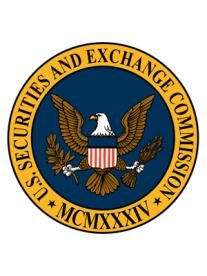The Securities and Exchange Commission (SEC) recently commenced 34 cease-and-desist actions against public companies and their insiders1 alleging violations under Sections 13 and 16 of the Securities Exchange Act of 1934, as amended (Exchange Act), for failing to timely report information about holdings and transactions in company stock. Simultaneously, it settled 33 of those actions for approximately $2.6 million in the aggregate.2 The SEC also commenced and settled fraud actions against a public company and one of its insiders based on more egregious violations of the same reporting requirements for an additional $550,000 in the aggregate.3
These actions signal the SEC’s heightened focus on compliance with the reporting requirements under Sections 13 and 16 of the Exchange Act. Public companies and their directors, officers and significant investors should consider these enforcement actions as a warning not only that the SEC is monitoring compliance with Sections 13 and 16 of the Exchange Act, but also that the SEC is seeking to vigorously enforce technical aspects of the securities laws not involving fraud that may not have been areas of focus in the past.
Background
The actions brought by the SEC involved reporting obligations under Sections 13(d), 13(g) and 16(a) of the Exchange Act and Item 405 of Regulation S-K.
-
Section 13(d) generally requires a person or group who beneficially owns more than 5% of a class of equity securities of a company that has been registered under Section 12 of the Exchange Act to publicly file a Schedule 13D or Schedule 13G with the SEC on EDGAR. A Schedule 13D is due within 10 days of the triggering acquisition. Investors that qualify to file a short-form Schedule 13G must file the Schedule 13G within 10 days of the triggering acquisition or, if they qualify under the rules, within 45 days after the end of the calendar year. Amendments are required upon certain triggers.
-
Section 16(a) generally requires an insider of a company with equity securities registered under Section 12 of the Exchange Act to file a Form 3 reporting such status within 10 days of becoming an insider. Section 16(a) also requires an insider to file (1) a Form 4 within two business days of most transactions that change that person’s economic interest in those equity securities and (2) a Form 5 within 45 days after the end of the company’s fiscal year to report transactions were not disclosed on Forms 3 or 4 during the most recent fiscal year.
-
Item 405 of Regulation S-K requires every company with a class of equity securities registered under Section 12 of the Exchange Act to disclose annually those of the company’s insiders that failed to timely file the reports required by Section 16(a) during the most recent fiscal year or prior years.
In enacting the reporting requirements in both Section 13(d) and Section 16(a) of the Exchange Act, Congress observed that disclosure of the existence (and intent) of persons beneficially owning more than 5% of a class of equity security of a public company and certain changes in the holdings of such persons and other insiders was important information that other stockholders of that company should have. Large sales by insiders, for example, could signal concerns about the company’s prospects. However, as a general matter, late and missed reports under Sections 13 and 16 of the Exchange Act have not garnered much enforcement attention by the SEC in recent years.
Parties Caught in Enforcement Sweep
The SEC sanctioned the following parties in the recent enforcement sweep:
-
fourteen directors or officers of public companies, including CEOs, CFOs, Principal Accounting Officers and General Counsels, some of whom were also greater than 10% beneficial owners, and who paid penalties ranging from $25,000 to $100,000;
-
five individuals who were beneficial owners of more than 10% of the stock of public companies, and who paid penalties ranging from $64,125 to $100,000;
-
ten investment firms that were beneficial owners of more than 5% of the stock of public companies (nine of which were also greater than 10% beneficial owners), including registered investment advisers and providers of investment management services to investment vehicles, that paid penalties ranging from $60,000 to $120,000; and
-
seven public companies that paid penalties ranging from $75,000 to $150,000.
As noted above, two others were charged with fraud and paid higher penalties.
Observations
A number of observations and conclusions can be drawn from these enforcement actions:
-
SEC appears focused on repeat violators under Section 16. The insiders targeted had, on average, nearly 30 late filings per person, and each such late filing was delayed by an average of slightly more than 200 days. This is not to say, however, that the enforcement actions were limited to persons with filings that were late by hundreds of days. A few of the individuals targeted made late Section 16 filings that were, on average, delayed by less than 15 days.
-
Penalties appear to be based upon, among other things, the number of late filings and length of delay. In general, the penalties assessed seemed related to the number of late filings and the amount of the delay. These two factors, however, do not completely explain the variety of penalties assessed. In one instance, a relatively high penalty seems to have been assessed against an individual who had relatively few late filings of his own with relatively short average delays. In that instance, the higher than expected penalty may have resulted from the fact that the insider had served as the general counsel and the SEC may have viewed him as being responsible, at least in part, for the late reporting of three other executives of that company also charged in the enforcement sweep.
-
Reliance on others or inadvertent filing errors are not defenses. It is not a defense for an insider to claim that someone else (for example, an in-house or outside lawyer) caused the failure or delay in filing. The failure of an issuer's compliance or legal department to properly file reports on behalf of insiders “does not excuse [an insider’s] violations because an insider retains legal responsibility for compliance with the filing requirements, including the obligation to assure that the filing is timely and accurately made.” In one instance, a principal accounting officer was apparently not advised upon assuming such role that he became an insider for purposes of Section 16 and thus became obligated to file reports under Section 16(a). As the SEC stated, “[t]here is no state of mind requirement for violations of Sections 16(a) and 13(d) and the rules thereunder. The failure to timely file a required report, even if inadvertent, constitutes a violation.”
-
A number of the enforcement actions against directors and officers involved 10b5‑1 plans. Adopting a 10b5-1 plan may lead to the execution of a larger number of transactions and, unless special steps are taken, these transactions may not be reported to the company quickly enough to meet the short filing deadlines under Section 16(a). This creates a greater risk that multiple filings will be delayed and thus picked up by an enforcement sweep looking for repeat violators.
-
Public companies face secondary liability as a cause of Section 16(a) violations where they voluntarily assist with Section 16 filings. Many, if not most, public companies assist their directors and officers with Section 16 filings. Such companies are liable for causing a securities law violation when it performs those responsibilities negligently (for example, personnel repeatedly failing to complete the filing tasks in a timely manner after receiving the insider’s information in a timely manner).
-
Public companies face primary liability for failure to annually disclose late Section 16 filings. The SEC expects issuers to report late Section 16 filings under Item 405 of Regulation S-K based on strict compliance with Section 16(a). This requires, among other things, that a company compare the Section 16(a) reports filed on EDGAR to the transactions disclosed by insiders each calendar year to determine whether any reports were filed late or missed entirely.
-
The SEC will charge fraud where the omissions were particularly egregious. In the two proceedings where it charged fraud, one involved a former executive and director of a public company who had an extensive history of non-compliance with Section 16(a) reporting (he was late on nearly 40 filings that were, on average, delayed more than 300 days each and he failed to file any required reports during a nearly two-year period when he disposed of more than 66% of his company holdings) and the other involved the same public company. The company had made Item 405 disclosures for at least two years that failed to note the executive’s late and missing filings and that indicated the Item 405 certification was based on representations received from directors and officerswhen there was no evidence that any such representations had in fact been sought or received.
-
The enforcement sweep is evidence of the SEC’s focus on enforcement using quantitative analytics and tools. The SEC has been developing quantitative tools to enable it to identify instances of securities law non-compliance unconnected with fraud or bad intent. In the past, these violations may have only been discovered or charged in connection with investigations of more serious matters. As SEC Enforcement Director Andrew Ceresney noted in the press release announcing the enforcement sweep “[u]sing quantitative analytics, we identified individuals and companies with especially high rates of filing deficiencies, and we are bringing these actions together to send a clear message about the importance of these filing provisions. Officers, directors, major shareholders, and issuers should all take note: inadvertence is no defense to filing violations, and we will vigorously police these sorts of violations through streamlined actions.” It was almost certainly not a coincidence that, one day after announcing the reporting violations sweep, the SEC trumpeted the formation of an Office of Risk Assessment within the Division of Economic Risk and Analysis by noting: “[This new] office will continue to develop and use predictive analytics to support supervisory, surveillance, and investigative programs involving corporate issuers, broker-dealers, investment advisers, exchanges, and trading platforms.”4
-
The enforcement sweep indicates that the SEC is continuing with its “broken windows” enforcement strategy. In 2013, SEC Chair Mary Jo White said that the SEC’s enforcement program under her leadership would emulate the “broken windows” strategy used by the New York City police force under then-Mayor Rudy Giuliani. She noted that “[m]inor violations that are overlooked or ignored can feed bigger ones.… [b]ut we can allocate our resources in such a way so that market participants understand we are at least looking and pursuing charges in all directions.” In bringing the recent enforcement actions regarding reporting violations and possibly signaling further enforcement actions in this area, Andrew M. Calamari, Director of the SEC’s New York Regional Office, echoed these thoughts by stating that “[t]he reporting requirements in the federal securities laws are not mere suggestions, they are legal obligations that must be obeyed. Those who fail to do so run the risk of facing an SEC enforcement action.”
Practical Considerations
Review policies and procedures. While not a cause for panic, the SEC’s recent enforcement actions suggest that public companies and investors in public companies should assess and update their procedures for complying with Section 16(a) (and, for investors, Section 13(d) as well) and, if no such procedures have been adopted, should consider adopting such procedures. For example, requiring pre-clearance of all insider transactions, including 10b5-1 plans, not only helps ensure insider trading compliance but also compliance with the reporting requirements.
Public companies should ensure (1) that directors and officers certify compliance with Section 16(a) annually (perhaps as part of the annual questionnaire process) in connection with the preparation of the company’s proxy and annual report and provide a listing of all transactions in company stock since the last such certification (other than option and stock grants by the company), and (2) that appropriately trained personnel from (or acting on behalf of) the public company actually compare that listing and other transactions known to the company to the Section 16 reporting records on EDGAR and those received directly from insiders to confirm that the required reports were in fact filed and done so in a timely manner.
Consider periodic reminders and training. To ensure that these reporting obligations remain top of mind to those covered by the reporting rules, public companies should consider providing to their insiders and other compliance personnel periodic reminders of, and training on, the reporting requirements. The better the understanding that insiders have of the reporting requirements, the better prepared they will be to provide the company with the necessary information and to ensure that all required reports are timely filed.
1. The term “insiders” as used in this alert refers to directors, officers and greater than 10% beneficial owners, as such terms are defined under Section 16 of the Exchange Act.
2. SEC, Press Release, SEC Announces Charges Against Corporate Insiders for Violating Laws Requiring Prompt Reporting of Transactions and Holdings (Sep. 10, 2014), available here. The press release includes links to each of the individual enforcement actions.
3. SEC, Press Release, SEC Announces Fraud Charges Against Biotech Company and Former Executive Who Failed to Report Insider Stock Sales (Sep. 10, 2014), available here. The press release includes links to each of the individual enforcement actions.
4. SEC, Press Release, SEC Announces Creation of New Office Within its Division of Economic and Risk Analysis (Sep. 11, 2014), available here.





 i
i

